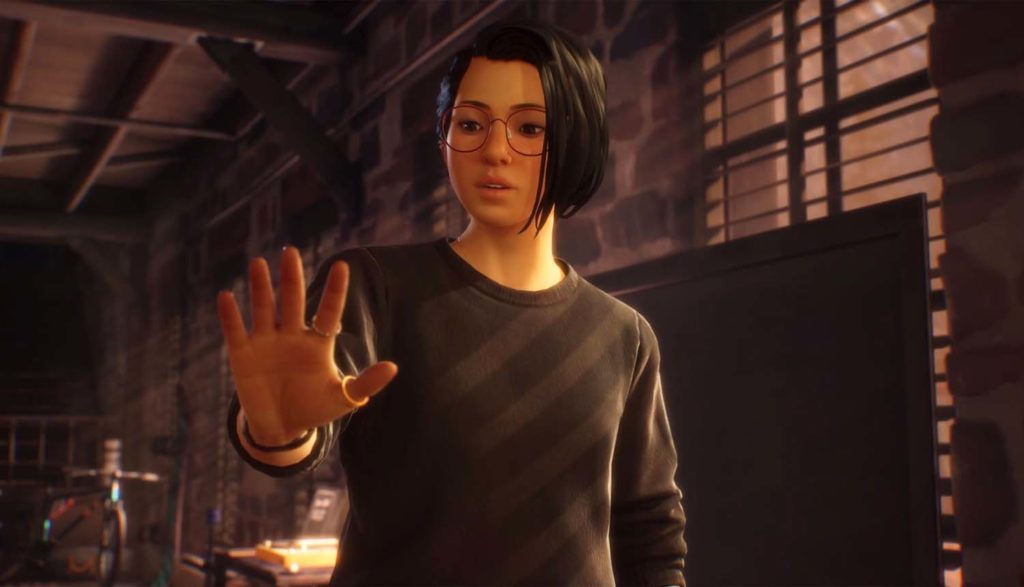
Emotions are often key elements that make a story, movie, TV show or game into something interesting and immersive. But Life is Strange: True Colors, the third entry in the Life is Strange story-game franchise, takes things a step further and makes emotion a central part of its hero’s super powers.
Gamers play as Alex Chen, a young woman who’s been in the foster care system since she was 10 and who’s spent the last several years in a caregiving facility. You get the impression that Alex has had some relational run-ins before and maybe even some violent conflicts.
All that is about to change, though, now that her older brother, Gabe, has tracked her down and invited her to join him in the pleasant little mountain town of Haven Springs, Colorado. And when Alex steps off the bus, the place does indeed seem like a haven. It’s filled with quaint little stores and shops and wonderfully welcoming people who all seem to know Alex from her brother Gabe’s conversations.
But like any group of people, the folks in Haven Springs have their own personal issues. Gabe’s single-mom girlfriend, Charlotte, is frustrated with her rambunctious son. His friend Riley is worried about her college applications. Eleanor, the flower shop owner, is troubled over what she fears are early signs of her own oncoming dementia.
And on top of all those worries (and others), the local mining company is covering up a dirty little secret that could well impact the whole town in negative ways.
What no one realizes, however, is that their newest townsperson, Alex, has a certain set of special powers. She can sense another person’s red-glowing anger or purple-tinged fear. And more than that, she can immerse herself in those emotional colors and relive someone’s past memories—determining how to get to the root of their problems and help them through. If other people’s negative emotions are strong enough, she can even siphon them off and leave those inflicted by intense feelings free from their inner torment.
All of that makes Alex Chen something of a superpowered empath. And she may well solve the mysteries and problems of Haven Springs or, when unexpected tragedy strikes, possibly make them worse.
As Alex, you walk around and interact with everything and everyone, revealing stories and through lines as you go. And while making ongoing decisions and choices that shape the story and the game’s ending, you occasionally make crucial, life-changing choices that affect everyone involved.
The emotions-focused nature of this game makes for a very different kind of gameplay. Much of what players must do deals with identifying the problems in other folks’ lives—their anger hotspots, greatest fears, sources of sadness—and then helping them change in positive ways.
As they engage with the game’s plot, players not only have to think through how to identify others’ emotional states, but also identify what might exacerbate a difficulty rather than help. In fact, True Colors helps illustrate the fact that sometimes the best choice is to let someone work through their own feelings without any outside manipulation.
This is also a game about relationships. It stresses good communication and the value of close friendship.
True Colors often has the feel of a T-rated game, but there are definite rough-edged elements to be found here.
For instance, some people get caught up in a red rage of anger. That can result in an occasional fight where punches are thrown, and faces are bruised and bloodied. Someone is shot at one point, too.
Alex’s sensitivity to those emotions comes into play as well. For example, when someone attacks her brother with a jealous passion, she is so swept up in the rage of the event that she leaps on the attacker and pounds him bloody in a mad, uncontrolled fury.
There are moments of peril and threat in the mix as well. Someone gets killed in a tragic mountain rockslide. Foul, corporate malfeasance is part of the story. Drinking alcohol and a drinking game are both potential parts of the gameplay. And there’s a marijuana dispensary featuring various bongs and pipes that are key to one of the story elements. (Though players actually can’t partake.)
Foul language in the form of f- and s-words and other lesser crudities are heard in the dialogue. And some coarse conversations refer to sexual relationships between the story’s characters. Speaking of that, Alex can enter into a same-sex or opposite-sex relationship if she chooses, though an embrace and a kiss are the only on-screen interactions.)
Life is Strange: True Colors is definitely a, uh, game of a different color. There are M-rated elements that should keep young gamers at arm’s-length. And the unnecessary, regularly peppered language may well keep some adults at bay, too, when it comes to this otherwise thoughtful and creative game.

After spending more than two decades touring, directing, writing and producing for Christian theater and radio (most recently for Adventures in Odyssey, which he still contributes to), Bob joined the Plugged In staff to help us focus more heavily on video games. He is also one of our primary movie reviewers.